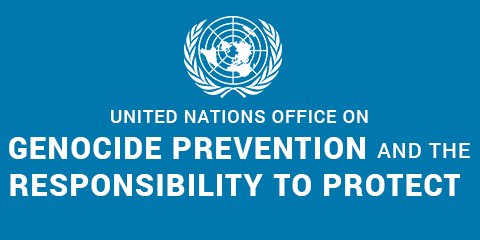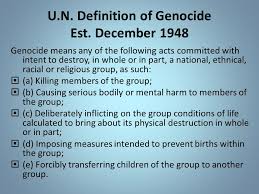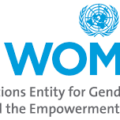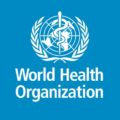The definition of the crime of genocide as contained in Article II of the Genocide Convention was the result of a negotiating process and reflects the compromise reached among United Nations Member States in 1948 at the time of drafting the Convention. Genocide is defined in the same terms as in the Genocide Convention in the Rome Statute of the International Criminal Court (Article 6), as well as in the statutes of other international and hybrid jurisdictions. Many States have also criminalized genocide in their domestic law; others have yet to do so.
The United Nations (UN) Defines genocide as any of the following acts committed with intent to destroy, in whole or in part, a national, ethnical, racial or religious group, as such:
- Killing members of the group;
- Causing serious bodily or mental harm to members of the group;
- Deliberately inflicting on the group conditions of life calculated to bring about its physical destruction in whole or in part;
- Imposing measures intended to prevent births within the group;
- Forcibly transferring children of the group to another group.
The word “genocide” was first coined by Polish lawyer Raphäel Lemkin in 1944 in his book Axis Rule in Occupied Europe. It consists of the Greek prefix genos, meaning race or tribe, and the Latin suffix cide, meaning killing. Lemkin developed the term partly in response to the Nazi policies of systematic murder of Jewish people during the Holocaust, but also in response to previous instances in history of targeted actions aimed at the destruction of particular groups of people. Later on, Raphäel Lemkin led the campaign to have genocide recognized and codified as an international crime.
Genocide was first recognized as a crime under international law in 1946 by the United Nations General Assembly (A/RES/96-I). It was codified as an independent crime in the 1948 Convention on the Prevention and Punishment of the Crime of Genocide (the Genocide Convention). The Convention has been ratified by 149 States (as of January 2018). The International Court of Justice (ICJ) has repeatedly stated that the Convention embodies principles that are part of general customary international law. This means that whether or not States have ratified the Genocide Convention, they are all bound as a matter of law by the principle that genocide is a crime prohibited under international law. The ICJ has also stated that the prohibition of genocide is a peremptory norm of international law (or ius cogens) and consequently, no derogation from it is allowed.
The genocide convention was first invoked before an international tribunal in 1993, when the government of Bosnia and Herzegovina argued before the International Court of Justice that the Federal Republic of Yugoslavia was in breach of its obligations under the convention. During the 1990s the international community became more vigorous in prosecuting alleged crimes of genocide. The UN Security Council established separate tribunals, the International Criminal Tribunal for the Former Yugoslavia (ICTY) and the International Criminal Tribunal for Rwanda (ICTR), both of which contributed to the clarification of the material elements of the offense of genocide as well as of the criteria establishing individual criminal responsibility for its commission. The Rwandan tribunal, for example, stated that genocide included “subjecting a group of people to a subsistence diet, systematic expulsion from homes and the reduction of essential medical services below minimum requirement.” It also ruled that “rape and sexual violence constitute genocide…as long as they were committed with the specific intent to destroy, in whole or in part, a particular group, targeted as such”—as was the case in the Rwandan conflict, where the government, dominated by the Hutu ethnic group, organized the mass rape of ethnic Tutsi women by HIV-infected men. On the critical issue of intent, the Yugoslav tribunal also ruled that genocidal intent can be manifest in the persecution of small groups of people as well as large ones. According to the tribunal, such intent
may consist of desiring the extermination of a very large number of the members of the group, in which case it would constitute an intention to destroy a group en masse. However, it may also consist of the desired destruction of a more limited number of persons selected for the impact that their disappearance would have upon the survival of the group as such. This would then constitute an intention to destroy the group “selectively.”
On July 1, 2002, the Rome Statute of the International Criminal Court (ICC), adopted in 1998 in Rome by some 120 countries, entered into force. The ICC’s jurisdiction includes the crime of genocide, and the statute adopts the same definition of the offense as found in the genocide convention. The establishment of the ICC—though without the participation of the United States, China, and Russia—was another indication of a growing international consensus in favour of vigorous and concerted efforts to suppress and punish the crime of genocide.
Genocide is a process that develops in eight stages according Gregory H. Stanton, founding President, of Genocide Watch, the process is not linear. Logically, later stages must be preceded by earlier stages. But all stages continue to operate throughout the process they include:
CLASSIFICATION
All cultures have categories to distinguish people into “us and them” by ethnicity, race, religion, or nationality: German and Jew, Hutu and Tutsi. Bipolar societies that lack mixed categories, such as Rwanda and Burundi, are the most likely to have genocide. The main preventive measure at this early stage is to develop universalistic institutions that transcend ethnic or racial divisions, that actively promote tolerance and understanding, and that promote classifications that transcend the divisions. The Catholic church could have played this role in Rwanda, had it not been riven by the same ethnic cleavages as Rwandan society. Promotion of a common language in countries like Tanzania has also promoted transcendent national identity. This search for common ground is vital to early prevention of genocide.
SYMBOLIZATION
We give names or other symbols to the classifications. We name people “Jews” or “Gypsies”, or distinguish them by colors or dress; and apply the symbols to members of groups. Classification and symbolization are universally human and do not necessarily result in genocide unless they lead to the next stage, dehumanization. When combined with hatred, symbols may be forced upon unwilling members of pariah groups: the yellow star for Jews under Nazi rule, the blue scarf for people from the Eastern Zone in Khmer Rouge Cambodia. To combat symbolization, hate symbols can be legally forbidden (swastikas) as can hate speech. Group marking like gang clothing or tribal scarring can be outlawed, as well. The problem is that legal limitations will fail if unsupported by popular cultural enforcement. Though Hutu and Tutsi were forbidden words in Burundi until the 1980’s, code-words replaced them. If widely supported, however, denial of symbolization can be powerful, as it was in Bulgaria, where the government refused to supply enough yellow badges and at least eighty percent of Jews did not wear them, depriving the yellow star of its significance as a Nazi symbol for Jews.
DEHUMANIZATION
One group denies the humanity of the other group. Members of it are equated with animals, vermin, insects or diseases. Dehumanization overcomes the normal human revulsion against murder. At this stage, hate propaganda in print and on hate radios is used to vilify the victim group. In combating this dehumanization, incitement to genocide should not be confused with protected speech. Genocidal societies lack constitutional protection for countervailing speech, and should be treated differently than democracies. Local and international leaders should condemn the use of hate speech and make it culturally unacceptable. Leaders who incite genocide should be banned from international travel and have their foreign finances frozen. Hate radio stations should be shut down, and hate propaganda banned. Hate crimes and atrocities should be promptly punished.
ORGANIZATION
Genocide is always organized, usually by the state, often using militias to provide deniability of state responsibility (the Janjaweed in Darfur.) Sometimes organization is informal (Hindu mobs led by local RSS militants) or decentralized (terrorist groups.) Special army units or militias are often trained and armed. Plans are made for genocidal killings. To combat this stage, membership in these militias should be outlawed. Their leaders should be denied visas for foreign travel. The U.N. should impose arms embargoes on governments and citizens of countries involved in genocidal massacres, and create commissions to investigate violations, as was done in post-genocide Rwanda.
POLARIZATION
Extremists drive the groups apart. Hate groups broadcast polarizing propaganda. Laws may forbid intermarriage or social interaction. Extremist terrorism targets moderates, intimidating and silencing the center. Moderates from the perpetrators’ own group are most able to stop genocide, so are the first to be arrested and killed. Prevention may mean security protection for moderate leaders or assistance to human rights groups. Assets of extremists may be seized, and visas for international travel denied to them. Coups d’état by extremists should be opposed by international sanctions.
PREPARATION
Victims are identified and separated out because of their ethnic or religious identity. Death lists are drawn up. Members of victim groups are forced to wear identifying symbols. Their property is expropriated. They are often segregated into ghettoes, deported into concentration camps, or confined to a famine-struck region and starved. At this stage, a Genocide Emergency must be declared. If the political will of the great powers, regional alliances, or the U.N. Security Council can be mobilized, armed international intervention should be prepared, or heavy assistance provided to the victim group to prepare for its self-defense. Otherwise, at least humanitarian assistance should be organized by the U.N. and private relief groups for the inevitable tide of refugees to come.
EXTERMINATION
Extermination begins, and quickly becomes the mass killing legally called “genocide.” It is “extermination” to the killers because they do not believe their victims to be fully human. When it is sponsored by the state, the armed forces often work with militias to do the killing. Sometimes the genocide results in revenge killings by groups against each other, creating the downward whirlpool-like cycle of bilateral genocide (as in Burundi). At this stage, only rapid and overwhelming armed intervention can stop genocide. Real safe areas or refugee escape corridors should be established with heavily armed international protection. (An unsafe “safe” area is worse than none at all.) The U.N. Standing High Readiness Brigade, EU Rapid Response Force, or regional forces — should be authorized to act by the U.N. Security Council if the genocide is small. For larger interventions, a multilateral force authorized by the U.N. should intervene. If the U.N. is paralyzed, regional alliances must act. It is time to recognize that the international responsibility to protect transcends the narrow interests of individual nation states. If strong nations will not provide troops to intervene directly, they should provide the airlift, equipment, and financial means necessary for regional states to intervene.
DENIAL
Denial is the eighth stage that always follows a genocide. It is among the surest indicators of further genocidal massacres. The perpetrators of genocide dig up the mass graves, burn the bodies, try to cover up the evidence and intimidate the witnesses. They deny that they committed any crimes, and often blame what happened on the victims. They block investigations of the crimes, and continue to govern until driven from power by force, when they flee into exile. There they remain with impunity, like Pol Pot or Idi Amin, unless they are captured and a tribunal is established to try them. The response to denial is punishment by an international tribunal or national courts. There the evidence can be heard, and the perpetrators punished. Tribunals like the Yugoslav or Rwanda Tribunals, or an international tribunal to try the Khmer Rouge in Cambodia, or an International Criminal Court may not deter the worst genocidal killers. But with the political will to arrest and prosecute them, some may be brought to justice.







